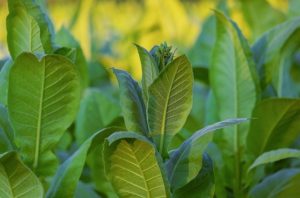APPLICATIONS:
- Agriculture
- Controlling gene expression in plants
- Modifying plants traits for the efficient production of food and other bio-based products
BENEFITS:
- Creates a contributing effect of specific genetic elements in controlling gene expression
- Improvements in controlling and tuning gene expression
- Maximizes sequence diversity while tuning promoter strength
BACKGROUND:
A major challenge in the development of tools for agricultural biotechnology has been the development of genetic parts that enable precise control of transgene expression in plants. Most plant biologists employ endogenous promoters which is more difficult for controlling and tuning gene expression.
TECHNOLOGY OVERVIEW:
Researchers at Berkeley Lab’s Joint BioEnergy Institute (JBEI) and BASF have developed a strategy for the design of synthetic activators, synthetic repressors, and synthetic promoters, resulting in a diverse library of new synthetic transcriptional regulators.
This invention blends elements from both yeast and plants and could theoretically be applied to any transcription factor (TF) type. This novel method expands beyond the well-characterized Gal4-based synthetic systems that have been used in the past, and the researchers extend this approach to five other yeast TFs. Parts design was approached in three ways: altering TF DNA-binding dynamics at the regulatory promoter by introducing DNA cis-element variation with randomly concatenated cis-elements, modulating RNA polymerase II recruitment by testing various plant minimal promoters, and directly modifying TFs from disparate families through truncation and fusion of activation or repression domains to generate new synthetic TFs, or trans-elements.
The synthetic TFs of this invention cover an expansive and diverse library of transcriptional regulators (comprising yeast or plant components) which can be used to control eukaryotic transcription. In conjunction with a library of promoter of varying strength, these synthetic TFs enable precise control of eukaryotic gene expression, especially in plants.
The researchers have validated the utility of their strategy and tools in Nicotiana benthamiana and Arabidopsis thaliana, demonstrating that these tools provide variation in transcriptional output while enabling the concerted expression of multiple genes in a tissue-specific and environmentally responsive manner in a number of plant species.
LBNL PRINCIPAL INVESTIGATOR: Patrick Shih
DEVELOPMENT STAGE: Proven principle
IP STATUS: Provisional patent
OPPORTUNITY: Available from LBNL for non-exclusive licensing or collaborative research.
ADDITIONAL INFORMATION:
Belcher, M.S., Vuu, K.M., Zhou, A. et al. “Design of Orthogonal Regulatory Systems for Modulating Gene Expression in Plants,” Nature Chemical Biology (2020).
RELATED TECHNOLOGIES:
